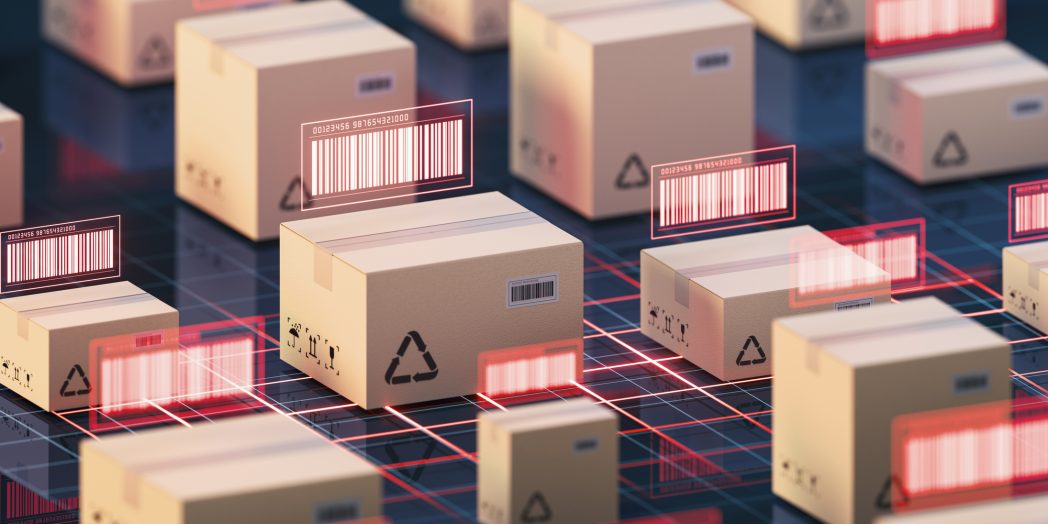Returns are an inherent facet of the product and warehouse lifecycle, embodying the dynamic relationship between consumers and the goods they acquire. Effectively navigating this process yields multifaceted advantages, including heightened customer satisfaction and fortified brand loyalty.
The strategic management of returns not only mitigates the dissatisfaction of customers but also serves as a catalyst for fortifying a brand’s reputation. Moreover, the optimization of return procedures significantly enhances warehouse productivity and efficiency, streamlining the movement of products through the logistical chain.
We recognize returns as being a natural and integral aspect of the business cycle, but let’s review what they are by definition, their common reasons, and their importance in the industry.
What is Returns Management?
Returns management refers to the systematic handling, processing, and optimization of product returns within a supply chain. It involves the coordination of activities related to returned items, which begins from the moment a customer initiates a return to the final disposition of the product.
Warehouse operations play a crucial role in returns management by efficiently processing returned goods, inspecting their condition, restocking them if appropriate, and determining the most suitable disposition, whether it’s restocking, refurbishing, recycling, or disposal. Effective returns management not only ensures customer satisfaction by providing a seamless return experience but also contributes to overall warehouse efficiency and inventory control. It involves the integration of technology, logistics, and customer service to streamline the reverse logistics process and minimize the impact of returns on operational costs.
Common Reasons for Returns
Let’s review some of the common reasons for returns from both the customer as well as the retailer.
Customer-Initiated Returns
- Product Dissatisfaction: Customers may return items due to dissatisfaction with the product, whether it’s a mismatch between expectations and reality, quality issues, or functionality concerns.
- Size and Fit Issues: Apparel and footwear often face returns as customers may find that the size or fit does not meet their expectations.
- Changed Mind or Buyer’s Remorse: Customers may change their minds after purchase due to impulse buying, financial considerations, or simply a shift in preferences, leading to the return of the product.
- Damaged or Defective Items: Some products may arrive damaged or defective, prompting customers to initiate returns for either replacements or refunds.
- Late Deliveries or Missed Expectations: Delays in delivery beyond promised timelines or unmet expectations regarding shipping speed may prompt customers to return items.


Retailer-Initiated Returns
- Recall or Product Defects: Retailers may initiate returns when there is a product recall or the identification of defects that pose safety concerns or fail to meet quality standards.
- Excess Inventory: Retailers may decide to return excess inventory to suppliers or manufacturers to optimize warehouse space or due to changes in demand forecasts.
- Seasonal Returns: In the fashion and retail industry, unsold seasonal items may be returned to make room for new collections, preventing overstocking.
- Supplier Errors or Shipment Discrepancies: Retailers may return items if there are errors in the shipment, such as receiving the wrong products, incorrect quantities, or damaged goods from the supplier.
- End-of-Life Products: Retailers may return products that have reached the end of their shelf life, ensuring that they don’t sell outdated or expired items to customers.
The Returns Process in Warehouse
Navigating the intricacies of the returns process within a warehouse is a critical facet of modern supply chain management. A seamless returns process not only ensures customer satisfaction but also serves as a linchpin for warehouse efficiency, inventory control, and continuous improvement initiatives.
Understanding and optimizing each stage empowers businesses to transform the challenges of returns into opportunities for enhanced customer loyalty and operational excellence. Below you can find a step-by-step guide which shows the key stages of the process and what to expect.
- Returns Authorization:
- Initiate the returns process by receiving a request from the customer, either through an online portal, customer service, or a designated returns platform.
- Validate the return request against the established return policy, checking factors such as return eligibility, time since purchase, and the condition of the item.
- Customer Returns:
- Provide the customer with a return authorization number and clear instructions on how to return the item, including packaging guidelines and the return address.
- Customers ship the returned items to the designated warehouse or return center, including the provided authorization number for easy identification.
- Inspection and Sorting:
- Upon receiving the returned items, conduct a thorough inspection to assess the condition and verify if the product matches the return authorization.
- Sort items based on their condition, categorizing them as resalable, refurbishable, or unsalvageable.
CHECK OUT SDI ELEMENT LOGIC’S COMPLETE MAINTENANCE AND SUPPORT SERVICES BELOW
- Restocking and Refurbishment:
- Resalable items can be restocked directly back into inventory after ensuring they meet quality standards.
- For refurbishable items, perform necessary repairs or improvements to bring them back to a sellable condition before restocking.
- Disposition of Unsalvageable Items:
- Determine the appropriate disposition for items that are unsalvageable, such as recycling, disposal, or other environmentally friendly methods.
- Follow legal and environmental regulations for the responsible disposal of unusable products.
- Customer Communication:
- Keep customers informed throughout the returns process, providing updates on the status of their return, inspections, and any relevant actions taken.
- Communicate any issues or delays transparently, managing customer expectations and enhancing their overall experience.
- Final Documentation:
- Document all steps of the returns process, including the reason for return, inspection results, refurbishment details, and final disposition.
- Use this documentation for continuous improvement, analyzing trends in returns to address common issues and enhance overall product quality and customer satisfaction.
Implementing a well-organized and efficient returns process is crucial for maintaining customer trust, optimizing warehouse operations, and minimizing the impact of returns on the supply chain.
How to Optimize the Warehouse Returns Process
Optimizing the warehouse returns process is paramount for enhancing customer satisfaction and operational efficiency. A strategic approach involves the following:
A crystal-clear returns policy, which establishes and communicates transparent eligibility criteria, timeframes, and procedures. You should also communicate the policy on your website, packaging, and customer service channels to manage expectations effectively.
Additionally, you should have incredibly clear and precise product descriptions. This will provide accurate and comprehensive information, minimizing the likelihood of customer dissatisfaction due to unmet expectations. Be sure to include detailed sizing charts, specifications, and high-quality images to offer a thorough understanding of the product.
Taking data analysis and reporting into account will prove useful as well. These are utilized to leverage data analytics tools to analyze return trends, identify common reasons for returns and areas for improvement. You may also generate regular reports to assess the impact of returns on inventory, customer satisfaction, and overall business performance.
You should also consider optimizing your in-warehouse workflows to streamline the returns process. Designate specific areas for returns processing and ensure efficient communication between departments and implement efficient sorting and inspection procedures to quickly identify resalable, refurbishable, and unsalvageable items.
Finally, be sure to use technology to automate processes. It is a good idea to integrate technology solutions such as barcode scanning and RFID systems to automate data entry and tracking, reducing errors and expediting the processing of returned items.
By implementing these strategies, businesses can not only minimize the impact of returns on operational costs but also transform the returns process into a value-added component of the customer experience, reinforcing brand loyalty and long-term success.
Using Technology to Streamline Returns in Warehouse

Leveraging advanced technology is pivotal for streamlining the returns process in a warehouse, enhancing efficiency and customer satisfaction.
Warehouse Management Systems (WMS), for instance, can play a crucial role by providing a comprehensive platform for managing inventory, order fulfillment, and returns. WMS enables seamless tracking of returned items, optimizing their journey through the warehouse from receipt to restocking or disposal.
Complementing WMS, dedicated Return Management Software offers specialized functionalities for processing and tracking returns. This software facilitates automated authorization, inspection workflows, and decision-making processes, ensuring a standardized and efficient approach to handling returned items.
Furthermore, the integration of Real-Time Inventory Management Software brings a heightened level of visibility and accuracy to the returns process. By constantly updating inventory data in real-time, this technology enables warehouses to promptly identify available stock, reducing the time between receiving a return and making the product available for resale.
Together, these technologies form a robust ecosystem that not only minimizes the logistical challenges of returns but also enhances overall warehouse efficiency and responsiveness to customer needs.
Measuring Returns Performance
Measuring returns performance is a critical aspect of assessing the effectiveness of a warehouse’s reverse logistics strategy. Key performance indicators (KPIs) such as return rates, processing times, and customer satisfaction metrics provide valuable insights into the efficiency of the returns process. Additionally, evaluating restocking efficiency is crucial, measuring how quickly returned items are reintegrated into inventory for resale.
A low restocking time not only minimizes the financial impact of returns but also ensures that products are promptly available to meet customer demands. Regularly monitoring and analyzing these metrics enables warehouses to identify bottlenecks, optimize workflows, and enhance overall operational performance, contributing to a seamless returns experience for customers and improved bottom-line results.
Conclusion
In conclusion, optimizing the warehouse returns process is a multifaceted endeavor that requires a strategic combination of clear policies, technological integration, and continuous improvement. By implementing advanced technologies like Warehouse Management Systems, Return Management Software, and Real-Time Inventory Management Software, businesses can streamline the returns journey, enhance operational efficiency, and elevate customer satisfaction.
SDI Element Logic stands as an exemplary solution provider in this domain, offering cutting-edge technologies and expertise to help businesses navigate the complexities of returns management. As the landscape of e-commerce and supply chain dynamics continues to evolve, a proactive approach to returns, informed by robust data analysis and responsive technology, not only mitigates challenges but transforms them into opportunities for growth and customer loyalty. Embracing these strategies and technologies is not just a choice but a call to action for businesses aiming to thrive in the ever-evolving world of warehousing and logistics.


